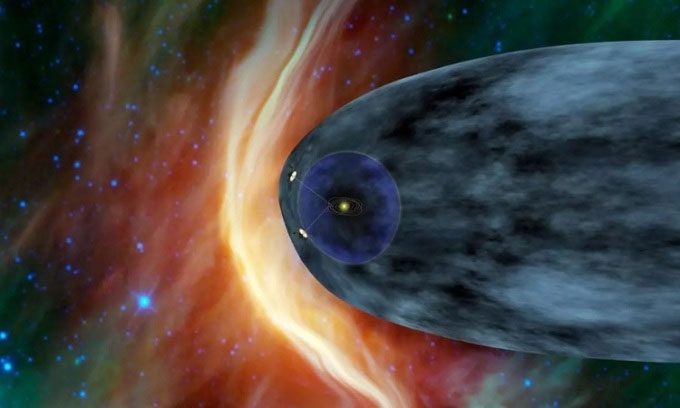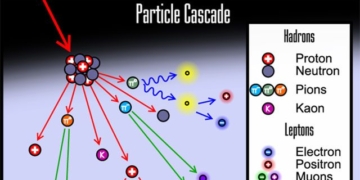NASA engineers have received a “heartbeat” signal from Voyager 2, bringing hope to reestablish communication with the spacecraft months earlier than anticipated.
More than a week after accidentally losing contact with the Voyager 2 probe, NASA authorities detected a positive signal that could allow them to restore communication with the interstellar spacecraft ahead of schedule. On August 1, NASA’s Jet Propulsion Laboratory (JPL) confirmed that their engineers received a network signal from Voyager 2, which is currently moving beyond the outer edge of the solar system, approximately 19.9 billion kilometers from Earth. “It sounds a bit like a ‘heartbeat’; this signal confirms that the spacecraft is still transmitting as engineers predicted,” JPL stated.

Simulation of Voyager 1 and 2 leaving the heliosphere. (Image: NASA).
This “heartbeat” signal reveals that Voyager 2 is still operational even after a series of maneuvers on July 21 inadvertently rotated the probe’s antenna 2 degrees off from Earth, disrupting communication between Voyager and NASA’s Deep Space Network, a collection of international radio antennas supporting various interplanetary missions.
After confirming the “heartbeat” signal, NASA will next attempt to send commands to Voyager 2 to adjust the probe’s antenna angle back toward Earth. Typically, it takes about 18.5 hours for commands to reach Voyager 2, and another 18.5 hours for signals to be received back on Earth, according to Scientific American. If the forced antenna adjustment fails, Voyager 2 is expected to realign its antenna toward Earth on October 15 during a series of self-correcting maneuvers.
Voyager 2 and Voyager 1 were launched into space in August and September 1977, respectively, just 16 days apart. Both probes flew past the outer planets of the solar system before heading toward the heliopause, the outermost layer of the Sun’s atmosphere that separates the solar system from interstellar space.
Voyager 1 crossed the heliopause first, entering interstellar space in August 2012. Currently, this probe is 23.8 billion kilometers from Earth, making it the farthest human-made object from our planet. Voyager 2 followed a few years later, leaving the heliopause in November 2018.
Both probes currently have sufficient power and fuel to last at least until 2025, according to NASA. After that, they will become the two most valuable phonograph record players in history. The duo carries copies of the Golden Record, a collection of songs and sounds that describe Earth’s natural heritage and music for any extraterrestrial beings that might encounter them, along with Earth’s relative position to a series of celestial landmarks.





















































